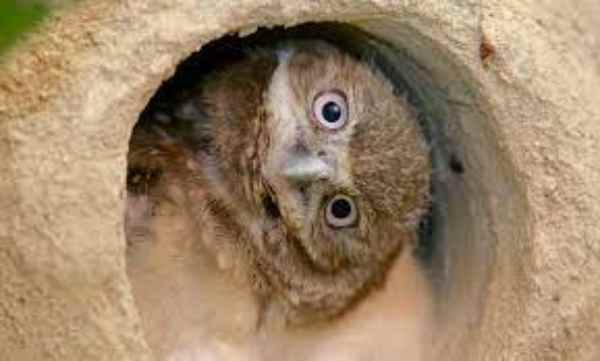As the sun dips below the horizon and darkness blankets the landscape, a different world awakens in Wisconsin. The state’s forests, fields, and wetlands come alive with the rustle of leaves, the hoots of owls, and the scurrying of creatures that thrive under the moon’s gentle glow. Welcome to the captivating realm of nocturnal animals in Wisconsin, a mysterious world often overlooked in the daylight.
In this article, we delve into the shadows, shedding light on the enigmatic creatures that emerge after dark. From stealthy predators like owls and foxes to the intriguing behaviors of bats and raccoons, we explore their unique adaptations, essential roles in the ecosystem, and the delicate balance they maintain in Wisconsin’s diverse habitats. Join us on this nocturnal adventure as we unravel the secrets of Wisconsin’s night-dwelling inhabitants and gain a deeper appreciation for the darkness that teems with life.
Table of Contents
Nocturnal Ecosystems in Wisconsin:
Wisconsin, blessed with a diverse array of ecosystems, transforms into a nocturnal haven when the sun sets. From the dense woodlands of the Northwoods to the open prairies of the southwest, each ecosystem reveals its own nocturnal cast. Wetlands echo with the songs of frogs and calls of night herons, while the woods harbor stealthy hunters like owls, raccoons, and bobcats. Bats take to the skies, foraging for insects in the moonlit night. The state’s water bodies come alive with the secretive movements of beavers and muskrats. This nocturnal tapestry provides a unique glimpse into the thriving life that operates under the cover of darkness.
Overview Of Nocturnal Animals In Wisconsin
Eastern Screech Owl (Megascops asio):

The Eastern Screech Owl, a small but charismatic owl species in Wisconsin, is primarily nocturnal, displaying its peak activity during the night. Known for its distinctive ear tufts and variable colorations, they hunt under the cover of darkness, preying mainly on small mammals, insects, and birds. Their keen senses and sharp talons make them efficient hunters in the moonlit hours. In wooded areas and urban parks across Wisconsin, lucky observers might hear their eerie, haunting calls echoing through the night, a characteristic sound that adds to the mystique of the nocturnal realm.
Gray Fox (Urocyon cinereoargenteus):
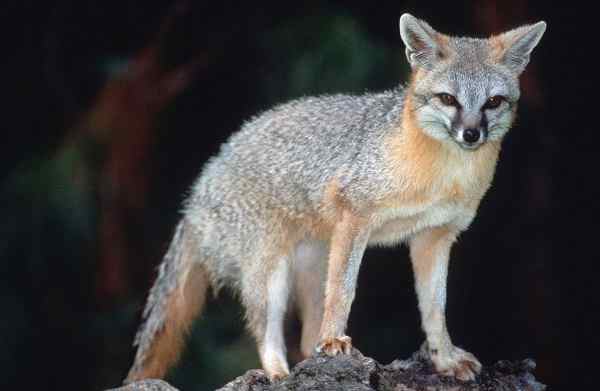
The gray fox, a clever and elusive canid, roams the Wisconsin landscapes under the veil of night. With its beautiful gray fur and nocturnal tendencies, this species thrives in a variety of habitats. As dusk settles, the gray fox becomes active, embarking on foraging expeditions for small mammals, birds, and insects. Their adaptability and hunting prowess make them successful predators in the nocturnal world. In the moonlit darkness, these foxes blend seamlessly with their surroundings, showcasing the essence of wildlife that comes alive under the starry Wisconsin sky.
Raccoon (Procyon lotor):
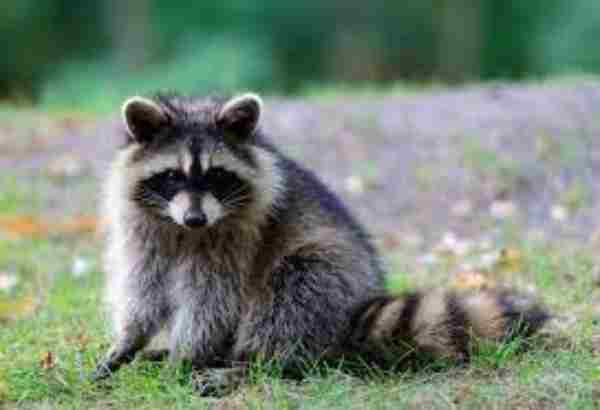
The raccoon, a familiar and highly adaptable creature, is perhaps one of Wisconsin’s most well-known nocturnal inhabitants. Emerging from their dens as the sun sets, these clever mammals begin their nocturnal adventures, using their nimble paws and keen senses to explore their surroundings.
Opportunistic feeders and raccoons will consume a variety of foods including fruits, insects, small mammals, and even human-provided fare. Their distinctive masked faces and engaging behaviors capture the essence of nighttime wildlife in the state, often encountered in urban areas, forests, and near water sources. The raccoon’s ability to navigate and thrive in the darkness exemplifies the intriguing world of nocturnal creatures residing within Wisconsin.
Eastern Red Bat (Lasiurus borealis):

The Eastern Red Bat, a captivating and nimble creature, takes to the Wisconsin skies as dusk descends. Their reddish fur and leathery wings make them easily distinguishable as they fly in search of insects during the night. Foraging primarily on moths, beetles, and flies, these bats exhibit their expert aerial hunting skills, showcasing the efficiency of their nocturnal lifestyle. Eastern Red Bats, though relatively small, play a crucial role in maintaining insect populations, contributing to the balance of the ecosystem under the moonlit Wisconsin nights.
Big Brown Bat (Eptesicus fuscus):

The Big Brown Bat, a common and robust bat species, emerges from its roost as night blankets Wisconsin. With an impressive wingspan and keen echolocation abilities, they skillfully snatch insects like moths and beetles from the darkness. These insectivores play a vital ecological role by helping control insect populations, making them valuable allies for both agriculture and local ecosystems. Their adaptability to urban environments has allowed them to coexist with humans, underscoring their resilience and showcasing the cohabitation of wildlife and humanity within the nocturnal realm.
Northern Long-eared Bat (Myotis septentrionalis):

The Northern Long-eared Bat, a species with distinctive ears and a wingspan of over nine inches is a nocturnal marvel found in Wisconsin. Emerging from their roosts after sunset, these bats embark on their nightly foraging expeditions, primarily feeding on moths and flies. Their nocturnal habits are essential for pest control, making them significant contributors to the region’s ecosystem. Facing threats such as habitat loss and White-nose Syndrome, the Northern Long-eared Bat’s nighttime presence reminds us of the delicate balance that nocturnal creatures hold within the natural world.
Eastern Whip-poor-will (Antrostomus vociferus):

The Eastern Whip-poor-will, a captivating nocturnal bird with its repetitive call echoing through the Wisconsin woodlands, comes to life as darkness falls. Their nighttime choruses and aerial foraging for insects define the nocturnal soundscape of the region. Feeding primarily on moths and beetles, these birds demonstrate their prowess as nighttime insectivores. The Eastern Whip-poor-will’s presence adds a melodious and mysterious note to the moonlit hours, emphasizing the rich biodiversity that awakens when the sun sets.
Opossum (Didelphis virginiana):
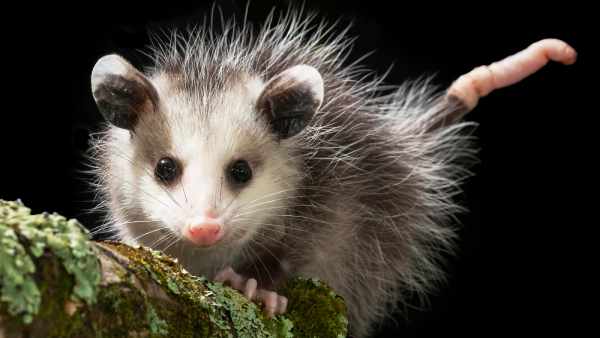
The opossum, an intriguing marsupial, is a common nocturnal creature found throughout Wisconsin. With their rat-like tails and characteristic white faces, they forage for food primarily during the night. Opportunistic omnivores and opossums consume a variety of fare including insects, fruits, small mammals, and even carrion. Their nighttime habits and ability to adapt to diverse environments underline their resourcefulness and survival skills. Opossums play an essential role in controlling insect populations and aiding in the decomposition of organic matter, making them valuable components of Wisconsin’s ecosystems.
Coyote (Canis latrans):

The coyote, a highly adaptable and intelligent canid, is often most active during the night in Wisconsin. Known for their haunting howls echoing through the nighttime landscape, they are skilled hunters and opportunistic feeders. Their diet includes small mammals, birds, insects, fruits, and occasionally scavenged carrion. Coyotes’ nocturnal activities demonstrate their ability to navigate and thrive in the darkness, making them a significant presence in Wisconsin’s nocturnal wildlife.
Eastern Small-footed Bat (Myotis leibii):

The Eastern Small-footed Bat, a diminutive bat species with unique small feet and a wingspan of about eight inches is a nocturnal wonder of Wisconsin. Emerging after sunset, they fly skillfully through the night in search of insects, primarily moths and flies. These bats play an essential role in insect control, aiding in maintaining the ecological balance of their habitats. Their delicate presence in the night skies signifies the interconnectedness of nocturnal creatures and their contribution to the health of Wisconsin’s ecosystems.
Striped Skunk (Mephitis mephitis):
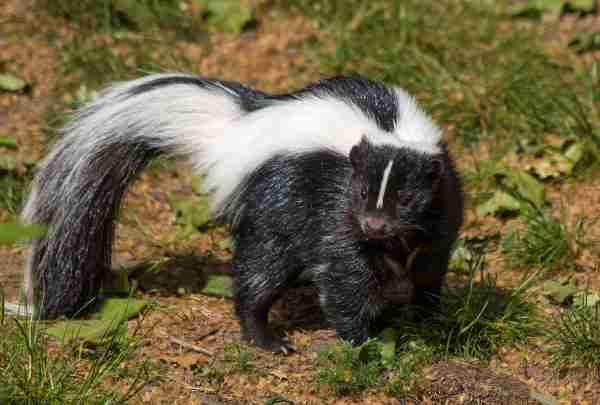
The striped skunk, a distinctive mammal known for its black fur and white stripes, roams Wisconsin’s landscapes predominantly during the night. Opportunistic omnivores, they consume a wide array of foods including insects, small mammals, fruits, and plants. Skunks’ nighttime foraging activities emphasize their adaptability and their essential role in controlling insect populations, especially harmful agricultural pests. Despite their strong scent glands as a defense mechanism, skunks’ nocturnal presence showcases their importance in the state’s wildlife tapestry.
Flying Squirrel (Glaucomys spp.):

Both the Northern and Southern flying squirrels, with their wing-like gliding membrane, are expert nocturnal gliders in the Wisconsin woodlands. Emerging after sunset, they actively forage for a diet primarily consisting of nuts, seeds, fruits, and insects. Their ability to glide from tree to tree, utilizing the darkness for cover, highlights their evolutionary adaptations for nocturnal life. These charming creatures bring a touch of enchantment to Wisconsin’s night, emphasizing the diverse and fascinating array of wildlife that thrives in the moonlit hours.
Eastern Box Turtle (Terrapene carolina carolina):
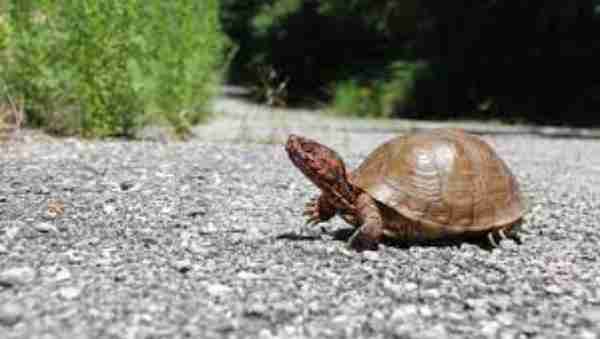
The Eastern Box Turtle, a distinctive land turtle known for its dome-shaped carapace and vibrant markings, is primarily active during the day but occasionally displays nocturnal behavior, especially during the warmer months. During the night, they may venture out to forage for food, which includes insects, fruits, and vegetation. This turtle’s occasional nighttime activity allows them to expand their foraging opportunities and demonstrates their adaptability to varying environmental conditions.
Eastern Hognose Snake (Heterodon platirhinos):

The Eastern Hognose Snake, a unique and mildly venomous serpent with an upturned snout, is active primarily during the night. Known for its elaborate defensive displays and diverse diet that includes amphibians, the Eastern Hognose Snake takes advantage of the cover of darkness to hunt and navigate its surroundings. Their nocturnal habits and specialized features underscore their role in the Wisconsin ecosystem and add to the region’s nocturnal biodiversity.
Eastern Chipmunk (Tamias striatus):
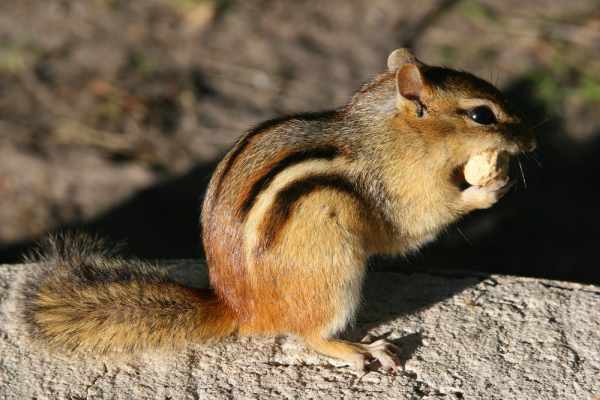
While Eastern Chipmunks are primarily diurnal, especially during the warmer months, they may exhibit some nocturnal behaviors, particularly during moonlit nights. These adorable rodents, known for their cheek pouches and quick movements, occasionally forage for seeds, nuts, and fruits under the cover of darkness. Their occasional nighttime activity highlights their adaptability and showcases the diversity of wildlife behavior within Wisconsin’s habitats.
Behavioral and Physiological Adaptations for Nocturnal Life:
Nocturnal animals in Wisconsin exhibit a fascinating array of behavioral and physiological adaptations honed for their nighttime lifestyles. Enhanced senses of hearing, smell, and vision equip them to navigate and forage effectively in low-light conditions. Owls, for example, possess exceptional hearing capabilities and specialized feathers for silent flight, aiding them in capturing prey unnoticed.
Bats use echolocation to locate insects, while animals like the American woodcock engage in elaborate courtship displays under the cover of darkness. These adaptations allow them to thrive in their nocturnal niche, revealing the incredible evolutionary adaptations crafted for a life governed by the moon and stars.
Ecological Importance of Nocturnal Animals:
Nocturnal animals are integral components of Wisconsin’s ecosystems, contributing significantly to their health and balance. They play crucial roles as both predators and prey, helping control insect populations, manage rodent numbers, and disperse seeds. Additionally, some nocturnal animals, such as bats, contribute to pest control by consuming vast quantities of insects each night. Their ecological importance extends to nutrient cycling, pollination of plants, and maintenance of biodiversity. Understanding and valuing the role of nocturnal animals is essential for holistic conservation efforts that aim to preserve the delicate balance of Wisconsin’s ecosystems.
Conservation Efforts and Challenges:
Conserving nocturnal animals in Wisconsin presents unique challenges. Habitat loss and fragmentation due to urbanization, deforestation, and agriculture significantly impact nocturnal species, disrupting their natural habitats and food sources. Light pollution, a rising concern, disrupts their behavioral patterns, navigation abilities, and breeding cycles. Additionally, climate change alters the timing and availability of resources, affecting the delicate synchronization between nocturnal animals and their environment.
Conservation efforts require comprehensive strategies, including habitat preservation and restoration, reducing light pollution, and raising awareness about the ecological importance of nocturnal species. Engaging communities, policymakers, and organizations in these efforts is essential to ensure a sustainable future for Wisconsin’s nocturnal wildlife.
Encouraging Responsible Nocturnal Wildlife Observation:
Promoting responsible nocturnal wildlife observation is vital to minimize disturbance to nocturnal animals and their habitats. Respectful and considerate behavior, such as keeping a safe distance, minimizing noise, and avoiding the use of bright lights, allows for wildlife to behave naturally without stress or disruption. Wildlife enthusiasts and nature lovers can benefit from educational programs that emphasize ethical wildlife observation, teaching the importance of coexisting harmoniously with nocturnal creatures. By fostering a culture of responsible wildlife appreciation, we can preserve the beauty and integrity of Wisconsin’s nocturnal ecosystems for generations to come.
Final Words:
Wisconsin’s nocturnal world offers a glimpse into a thriving and often mysterious realm, showcasing the wonders of nature under the cover of darkness. Recognizing the ecological importance of nocturnal animals and the challenges they face is imperative for the conservation of Wisconsin’s diverse ecosystems. As we navigate the nightscape, let us embrace responsible wildlife observation, champion conservation efforts, and celebrate the remarkable nocturnal inhabitants that contribute to the magical tapestry of our state’s natural heritage.
Reference:
- https://dnr.wisconsin.gov/sites/default/files/topic/Research/lessons_AnimalAlphabetSlideshow.pdf
- https://www.reconnectwithnature.org/news-events/the-buzz/nature-curiosity-why-are-some-animals-nocturnal/
- https://en.wikipedia.org/wiki/Wisconsin

Jeevan Kodiyan
An animal enthusiast with an interest in zoology, studying the behavior and activities of animals in the wild habitat. I work on research projects related to species conservation and endangered species protection. I also leverage zoology to become an educator, educating others about the importance of protecting our natural environment and the beauty of animals in their natural habitats.

